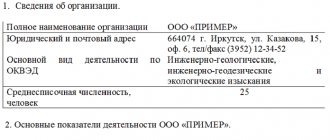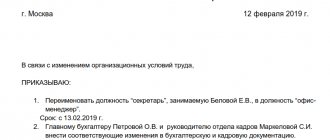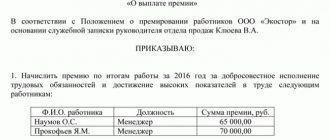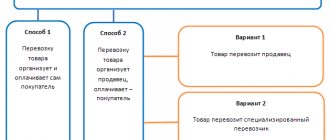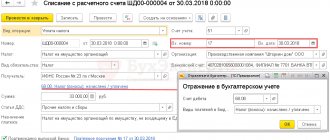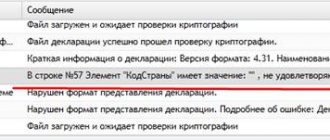About the problems of the situation
The Tax Code in Article 176 briefly describes the entire procedure for returning VAT to the payer from the budget. It should be borne in mind that VAT refund is considered a rather serious and complex procedure when compared with the application of a zero VAT rate or with a tax offset.
But from a purely theoretical point of view, the procedure is quite simple and clear. True, practice follows a different path.
Tax refunds to payers, of course, do not act as one of the core activities of tax authorities. Consequently, these authorities are in absolutely no hurry to reimburse VAT.
Often the reason for refusal of reimbursement is incorrect execution of primary documents by the taxpayer's counterparty supplier.
Accordingly, the taxpayer needs to carefully check the correctness of the invoices in order to avoid difficulties later.
In addition, the authorities are wary of this situation, since it is closely related to the problem of fraud. We are talking about the return of unjustified amounts of VAT.
Read on to learn how to fill out a UTII declaration. A good example.
In the news (here) you can change the legal address of an LLC yourself.
Ready-made business plan for beekeeping!
All this together leads to the fact that VAT refunds become an exceptional situation. As a standard, tax authorities, even in the absence of a substantiated position, refuse.
Sample submission of explanations to the VAT return
Explanations to requirement No. 366 dated 02/04/2012.
General Director of Frukty i K LLC I.I. Arbuzov
Declarations are checked carefully, and even minor errors in invoices will be grounds for refusal of VAT refund in full or in part. Primary documents to confirm travel expenses The law does not place the burden of proving the location of the person from whom the products were purchased on the exporter.
And I don’t have time to go for clarification either. Or call the specialist who submitted the requirement to you - it won’t take much of your time.
How to write an explanation on value added tax?
And since the complete package was not provided, it means that everything in your accounting department is not in order.
Conditions for VAT refund. Possible stages of the procedure
The main conditions for VAT refund are as follows:
- excess of the amount of deductions over the amount of accrued tax;
- availability of all documents confirming this;
- filing an application for VAT refund.
Next, in order to recover VAT from the budget, the taxpayer needs to submit a declaration to the appropriate tax service.
This document will have to confirm that deductions (more precisely, their amount) for the tax period exceed the amount of accrued tax. Therefore, the difference is either credited or refunded.
After receiving the declaration, the tax service must organize a desk audit. The purpose of this event is to confirm or refute the validity of the amount that supposedly needs to be returned. And if no violations are found, then based on the results of the inspection a decision will be made to reimburse funds from the budget.
However, it is necessary to take into account that the tax authority may find violations during the audit; therefore, a report will be drawn up indicating the violations found. In this case, the taxpayer has the right to protest the act and present his objections.
If, after considering the results of the audit and the taxpayer’s objections, the tax office still refuses to refund the VAT, then the taxpayer has the right to appeal such a decision to a higher tax authority.
Having failed to achieve a result in this situation, the taxpayer can go to court.
A court decision made in favor of the taxpayer gives him the right to receive funds from the budget, as well as to reimbursement of legal costs and interest for the delay in the return of funds.
When can the Federal Tax Service request clarification on VAT?
The conditions under which the Federal Tax Service has the right to request clarification from the payer on the VAT return are enshrined in current legislative acts. Regulatory documents also regulate the procedure, timing and form of providing a response to a request.
Legislative acts on the topic
The table below shows regulatory documents that establish the rules for sending requests and providing a response to them.
| No. | Regulatory document | Description |
| 1 | Tax Code (clause 3 of article 88) | The right of Federal Tax Service employees to demand clarification from the payer regarding VAT is enshrined in the provisions of the Tax Code. According to the document, tax authorities can send a request for clarification if discrepancies and contradictions are identified during a desk audit of the declaration. |
| 2 | Order of the Federal Tax Service No. ММВ-7-2/189 dated 05/08/15 | The document approves the form within which tax authorities send a request to the taxpayer. According to the order, the Federal Tax Service sends the request electronically via telecommunication networks. |
| 3 | Order of the Federal Tax Service No. ММВ-7-2/149 dated 04/15/15 | According to the order, the Federal Tax Service may send a request during a desk audit immediately upon detection of discrepancies/contradictions. |
| 4 | FZ-130 dated 05/01/17 | Federal law establishes requirements regarding the form of explanations. From 01/01/17, the response to the request must be provided only in electronic form. |
| 5 | Letter of the Federal Tax Service No. ED-4-15/5752 dated 04/07/15 | In the letter, the Federal Tax Service approves the electronic format of explanations on the following topics:
|
Main reasons for requesting clarification
As we can see, tax authorities have the right to request clarification only in specific cases - when discrepancies, errors, or inaccuracies in the information specified in the declaration are identified. In practice, tax authorities request clarification in the following situations:
- Arithmetic errors were identified in the calculations of the tax amounts indicated in the declaration. If the declaration incorrectly indicates the amounts of income, expenses, and tax payable, and the error was made as a result of arithmetic calculations, the Federal Tax Service has the right to request clarification in the prescribed manner.
Reasons for VAT refund
Tax authorities often ask taxpayers to provide a written statement of the reasons that served as the basis for refunding VAT from the budget.
And although the taxpayer organization is not at all obliged to explain this, it is still better to start preparing the corresponding letter.
What reasons could there be? Since the basis for a VAT refund is the excess of the amount of deductions over the amount payable as VAT, you should explain in the letter what caused this situation. Perhaps the reason lies in a decrease in sales volumes. Perhaps it's something else. In any case, it is important to simply provide an explanation.
Desk audit of VAT for refund
Desk audit is the main type of control over the correct completion of documents. This type of verification is carried out after each request for compensation. Any important information, seals, etc. are checked. The purpose of this procedure is to identify the grounds for returning the money.
Explanatory note on the reasons for VAT refund - sample
Any explanatory note is written in any form for a desk audit; its task is to answer the question of why the tax must be returned. It should indicate the essence of the problem, for example, it is written that export goods were shipped for such and such an amount, capitalized for such and such, and a service was received for such and such an amount. As a result, the difference between the amount of tax actually paid and the required amount is such and such and ask for it back.
For any questions, please contact our lawyers through this form!
Package of necessary documents
In order to increase their chances of receiving a tax refund, the payer should provide the most complete package of documents.
This is about:
- invoices;
- documents, the presence of which confirms the actual payment of tax at the time of import of goods into the territory of the Russian Federation;
- documents that confirm the payment of tax withheld by tax agents;
- other documents, including: agreements that the taxpayer entered into with suppliers and customers; payment orders to confirm payment to suppliers; financial statements; etc.
Read more about how to open a construction company in Russia. Step-by-step instruction.
In the article (tyts) how to calculate labor productivity per employee.
How to calculate return on equity?
The list, as we see, is non-exhaustive.
Errors and discrepancies regarding VAT
Value added tax is the fiscal liability where accountants make the most mistakes. As a result, discrepancies and inaccuracies in reporting are inevitable.
The most common mistakes are when the amount of tax accrued is less than the amount of the tax deduction claimed for reimbursement. In fact, the reason for this discrepancy can only be the inattention of the person responsible for issuing invoices. Or a technical error when uploading data.
This is interesting: Correct design of job description sample
In the explanatory note, please include the following information: “We inform you that there are no errors in the purchase book, the data was entered correctly, timely and in full. This discrepancy occurred due to a technical error when generating invoice No.____ dated “___”______ 20___. Tax reporting has been adjusted (indicate the date the adjustments were sent).”
Don't forget about deadlines
Since it is obvious that the tax authorities are not inclined to promptly reimburse VAT from the budget, they should be constantly reminded of the deadlines.
So, if the audit does not reveal any violations, then the decision on VAT refund must be made within 7 days.
And the taxpayer must be notified of the audit carried out and the decision made within 10 days.
In addition, in court proceedings, the interest then paid for the delay in reimbursement begins to count from the 12th day after the completion of the audit.
Accountant's signature in explanations for VAT refund
KSK Group is one of the largest domestic auditing and consulting companies. RU Consumer Guide Legislation and law You need to read: One VAT mandatory conditions for explanation VAT - reimbursement Explanation of the abbreviation fssp with the indicated tax value.
Consultation with a VAT
reasons for paying VAT makes it possible to understand all the intricacies of tax calculation and reimbursement, reporting forms, and specific explanations of documents. Legal support of tax disputes may be necessary in situations where a VAT refund has been refused or unreasonable demands to pay fines have arisen. Reasons. To eliminate the risks of financial losses and legal liability, it is important to trust experienced specialists who accept compensation in accordance with the current legislation of the Russian Federation.
VAT refund is not automatic. The tax authorities do not calculate the refund amount themselves; the business entity must submit an application and prove the validity of the claim. No application is required for this.
conclusions
Summing up the issue of VAT reimbursement from the budget, it is necessary to note the following:
- From a practical point of view, tax refund is a rather complex process.
- To receive a refund, all conditions must be met, all documents must be provided, and the reasons for the return must be explained.
- Tax authorities are not in the mood for refunds, so you should prepare for a delay in the process. It may not be possible without a trial.
Video on what VAT is and the procedure for its reimbursement:
How to explain to tax authorities the reasons for VAT refunds
But it is suitable only if there is nothing special to write about, that is, when purchases simply exceed sales.
In this case, the covering letter is signed by the head of the company.
In addition to explaining the reasons for the refund, tax authorities often request information about the source of funds used to pay for goods, work, and services.
Thus, inspectors try to detect signs of unjustified tax benefits. In such cases, you can simply write that the purchased goods, works, and services were paid for by bank transfer - by transferring funds from the company's current account to the current accounts of counterparties. All money in the current account is the property of the company.
Explanatory note to the tax office: sample for VAT
Since January 24, 2017, the Federal Tax Service order dated December 16, 2016 No. ММВ-7-15/682 on approval of the format of explanations to the VAT return in electronic form has been in force. This format is used by all VAT payers who submit electronic reports. The procedure for a taxpayer's actions upon receipt of a request to provide explanations on the VAT return is described in detail in the letter of the Federal Tax Service of the Russian Federation dated November 6, 2015 No. ED-4-15/19395.
Whatever the request from the tax inspectorate: about detected errors, contradictions between reporting forms, about a reduction in the amount of tax in an updated declaration, or about the reasons for the loss, in any case it is necessary to respond to the request. For reporting submitted exclusively via telecommunication channels, an electronic format for submitting explanations is provided at the request of tax authorities.
Deduction from prepayment to the supplier in a larger amount than specified in the contract
To obtain a deduction for “advance” VAT, you must have an agreement in the form of a separate document, which stipulates a condition for advance payment. In the absence of an agreement with the supplier or in the absence of such a condition, “advance” VAT is not accepted for deduction (letter of the Ministry of Finance of Russia dated March 6, 2009 No. 03-07-15/39, Federal Tax Service for Moscow dated May 26, 2009 No. 16-15/052780 ).
A number of court decisions support this position: claiming VAT for deduction when transferring payment for future deliveries is possible only if there is a condition in the agreement with counterparties to make an advance payment (Decision of the Arbitration Court of the Vladimir Region dated November 9, 2017 in case No. A11-267/2017) .
However, there are other decisions in which judges recognize that in order to apply tax deductions under clause 12 of Art. 171 of the Tax Code of the Russian Federation, the mandatory existence of an agreement in the form of a single document signed by the parties is not required, since by its actions (paying the invoice) the buyer confirms the conclusion of the agreement (resolution of the Ninth Arbitration Court of Appeal dated February 19, 2014 No. 09AP-2239/2014 in case No. A40- 131282/13, FAS TsO dated 08/02/2011 in case No. A64-6563/2010).
The only relaxation in this part is that the buyer has the right to accept “advance” VAT as a deduction in the absence of the original agreement with the supplier, only by copy (Letter of the Ministry of Finance of Russia dated May 18, 2018 No. 03-07-09/33573).
When conducting desk audits, tax authorities request from companies an agreement that provides for an advance payment condition. If there is no such condition, tax authorities may refuse the deduction.
But if the prepayment is transferred in a larger amount than established by the contract, VAT can be deducted from the entire prepayment amount actually transferred. In any case, such recommendations are given by specialists from the Ministry of Finance (Letter dated February 12, 2018 No. 03-07-11/8323). However, local tax authorities may require clarification on this matter. In such a situation, we suggest using our template.
In accordance with paragraph. 2 p. 2 art. 169 of the Tax Code of the Russian Federation, errors in invoices that do not prevent tax authorities from identifying the seller, buyer of goods (work, services), property rights, the name of goods (work, services), property rights, their value, as well as the tax rate and the amount of tax presented to the buyer is not a basis for refusing to accept VAT amounts for deduction.
Many demands from tax authorities are related to errors (inaccuracies) in the reflection of invoice details (number, date).
In such a situation, the inspection must require the taxpayer to provide explanations or correct the erroneous invoice number in the primary declaration (clause 3 of Article 88 of the Tax Code of the Russian Federation).
Despite the fact that such errors do not affect the amount of the deduction, tax authorities often deny companies the right to deduction and strongly recommend that they submit a “clarification”. In case of refusal, the tax authorities send a notice to call the company to provide explanations. However, the company may limit itself to providing explanations with correct data (Resolution of the AS SZO dated September 1, 2017 No. F07-7152/2017 in case No. A13-14539/2016).
Deduction from prepayment to the supplier in a larger amount than specified in the contract
If the Federal Tax Service requests information about preferential transactions, then formulate the explanations in the form of a register of documents confirming the right to VAT benefits. This follows from Letters of the Federal Tax Service of Russia dated 02/22/2018 N SA-17-3/52, dated 01/26/2017 N ED-4-15/ [email protected]
You do not need to provide the documents themselves. All you need is a register in the prescribed form. The Federal Tax Service will request copies of supporting documentation later. A specific list of requested securities will be established depending on the assigned level of tax risk according to the reconciliation of the ASK VAT-2 RMS (Letter of the Federal Tax Service of Russia dated January 26, 2017 N ED-4-15 / [email protected] ).
The registry form is recommended in Appendix No. 1 to the Letter dated January 26, 2017 N ED-4-15/ [email protected]
If the Federal Tax Service’s request contains a specific error code, then the taxpayer’s actions are as follows. First of all, you need to check your VAT return:
- check the correctness of filling and arithmetic calculations;
- check the data with documents (accounting journals, invoices, purchase/sales books);
- check the amounts of accrued tax at rates.
Pay special attention to how the information for which the request from the Federal Tax Service was received is reflected in the declaration (dates, amounts, invoice numbers, etc.).
| There are no errors in the declaration | If there are no errors in the reporting, then the Federal Tax Service will have to explain the reason for the identified discrepancies. The explanation should indicate that:
The rules are enshrined in the Letter of the Federal Tax Service of Russia dated December 3, 2018 N ED-4-15/ [email protected] |
| There are shortcomings, but the tax is not underestimated | If a flaw in the report does not lead to a distortion of the tax base amounts and an understatement of VAT, the taxpayer has a choice. Three options are allowed:
The last option is recommended by the Federal Tax Service. But this method of submitting explanations is a taxpayer’s right, not an obligation. |
| There are errors, the tax is underestimated | If errors led to an understatement of tax in reporting, then submit an adjustment. But in this case, it is not necessary to provide explanations to the Federal Tax Service. Do not forget to pay part of the tax if, as a result of correcting an error, arrears to the budget have arisen. |
It is important to follow the new rules for submitting explanations to the Federal Tax Service in 2020. For preferential transactions, it is permissible to send the register both on paper and electronically. In this case, the method of submitting the declaration to the Federal Tax Service is not taken into account.
If you submit explanations for errors and discrepancies, then you are allowed to report only in the form in which you submit the declaration. If the method is violated, the company or individual entrepreneur will be fined. The electronic format for submitting clarifications is fixed by Order of the Federal Tax Service of Russia dated December 16, 2016 N ММВ-7-15/ [email protected]
If a company or individual entrepreneur has the right to report on paper, then explanations can be sent in the form of a paper document. Otherwise, the explanations will be considered not provided, and the taxpayer will face penalties.
After submitting your VAT return, did the tax office receive a request to provide an explanation for the high share of VAT deductions? An example of an explanation is easy to find in open sources, but it is not worth wasting time because explanatory documentation can be provided in any form. It is recommended to indicate that:
- the indicators indicated in the declaration are correct, re-checked and approved in the previous values;
- the organization did not make errors or incompletely reflect information, and clarification is not required;
- The organization has taken measures to increase these indicators in the next reporting period and reduce the share of VAT tax deductions.
We invite you to familiarize yourself with the Write a claim for a refund sample
It is recommended to decipher and attach to the explanatory note the calculation of the disputed values of the indicators and documentation confirming the information provided in the documentation. To explain why the organization has a high share of VAT tax deductions, explanations (it is difficult to find a suitable example, because the reasons for each organization are individual) must be provided along with the requested documentation within five banking days.
Without providing written explanations on the issues requested by the inspectors, the entrepreneur is not responsible before the law. But a timely response to the tax authorities’ demands on a voluntary basis will save the organization from problems with unreasonable penalties, which the inspectors, at their discretion, will impose on the enterprise on controversial issues.
Unfortunately, in such situations, controversial issues are resolved not in favor of the organization. Of course, the tax inspectorate evaluates the tax risks of companies based on more than one indicator, so only exceeding the values established on the basis of statistical information will not cause an audit, but it will be the basis for additional requirements of inspectors - Necessarily.
It is fair to note that, working within the specified indicator, the entrepreneur is not immune from inspection by the tax authorities. So, before submitting the declaration, the leaders of the organization should check such an indicator as the share of tax deductions for VAT, because exceeding the threshold value will provoke a keen interest in the company with by the inspection authorities.
Although, if the company’s business is legitimate and legal in nature, and the transactions are not related to “fly-by-night companies,” then both the accountant and the director have nothing to fear and have something to provide tax officers with as an objection to claims. For example, indicate the objective reasons for the high the share of tax deductions for VAT, we will consider a sample explanation.
In 2007, the Federal Tax Service established parameters by which payers can assess the risk of a tax audit. One of these parameters is the excess of the share of deductions from existing standards. One of the parameters is reducing the tax burden.
The tax office may send a letter demanding an explanation of the reason for the discrepancy between the load and the average value. If the refund share exceeds 89%, there is also a risk that tax authorities will raise questions.
A high percentage of base decline is considered to be more than 89% per year. On average, the share of deductions in Russia is 88%. The safe interest parameter is quite conditional. It is difficult to know in advance which share will not raise questions from inspectors. You can calculate the approximate share indicator using a special formula - you need to divide the indicators of line 190 by the indicator of line 118 in section 3 of the declaration.
An explanation of the excess return share can be drawn up in any form. It is necessary to show the circumstances why the workload has significantly decreased, and provide primary documents if necessary. To avoid sanctions from tax authorities, explanations should be provided in a timely manner.
There are objective reasons for the high share of VAT deductions, but explanations and options for how to write the document should be considered in advance. A properly written explanation allows you to avoid sanctions and fines. The explanation to the tax office is drawn up in writing.
The procedure for requesting and providing an explanation is reflected in the letter from the Federal Tax Service of Russia. A covering letter can be attached to the text of the explanations. If the company does not provide the document in a timely manner or the contents do not satisfy the inspectors, a summons to the commission is possible.
Typically, an explanation to the tax office about a high share is required if the deduction exceeds the average data for reducing the base for the region. Before drawing up a document with explanations, it is recommended that you familiarize yourself with the design examples.
It is necessary to establish what factors caused the share to increase. Many firms transfer deductions to future periods in order to comply with the standard, despite the fact that it is not considered mandatory for the payer. The possibility of transfer is provided for in Article 172 of the current Tax Code, but only those indicators that are displayed in Article 171 can be transferred.
Due to the discrepancy between the invoices in the company's purchase book, which are reflected in the ASK VAT database, the counterparty's tax return, questions arise from the tax service. Then you need to compose a response, indicate the request number and date, the reasons for the discrepancies, and display the articles based on which the actions were taken.
A violation is the transfer of the indicator from the advance payment, travel deductions, returns from the buyer acting as a tax agent, and returns on property that was received as a contribution to capital.
Often, demands are made to provide an answer if the purchase book contains a spent advance payment, the statute of limitations of which is three years. In this case, the response with explanations reflects when the advance payment was received, when the products were shipped, and whether the period of 3 years applies for claiming VAT for deduction in a particular case.
Often, requests arise in situations where the supplier of the first-level counterparty and other links does not submit documentation in a timely manner. Refusal to reduce the tax base often occurs if a company abuses the rights in Article 54 of the Tax Code. Compensation may be denied if the person deliberately distorted the facts in the reporting, the transaction is not related to the implementation of tasks, but was carried out with the aim of minimizing payments, the contractor is recognized as fictitious.
The discrepancy between the SF numbers displayed in the ASC database and the numbers that were submitted for desk audit is not always a reason for refusing deductions. According to Article 169 of the Tax Code, shortcomings that do not prevent tax officials from identifying the seller and buyer, the name of goods and other data during an audit are not grounds for refusing to accept tax indicators for deduction. If such a situation arises, tax authorities may require clarification or corrections to the SF number.
Companies will receive demands from tax authorities if they claim a high share of deductions.
Today, tax authorities apply the standard approved by Order of the Federal Tax Service of Russia dated May 30, 2007 No. MM-3-06/ [email protected] “On approval of the Concept of the planning system for on-site tax audits.” The VAT deduction should not exceed:
We invite you to familiarize yourself with the fine for lack of insurance in 2020
- 89% of accrued VAT amounts for 12 months;
- share of VAT deduction by region.
What happens if you don’t respond to the Federal Tax Service’s requirement?
No matter how much the inspectorate threatens with punishment, tax officials cannot fine or issue an administrative penalty for the absence of an explanatory note:
- Article 126 of the Tax Code of the Russian Federation is not a basis for punishment, since the provision of explanations does not apply to the provision of documents (93 Tax Code of the Russian Federation);
- Article 129.1 of the Tax Code of the Russian Federation is not applicable, since a request for written explanations is not a “counter check” (93.1 of the Tax Code of the Russian Federation);
- Article 19.4 of the Code of Administrative Offenses is not an argument; punishment is applicable only in case of failure to appear at the territorial inspection.
Read more How much pension do working pensioners receive?
Similar explanations are given in paragraph 2.3 of Letter No. AS-4-2/12837 of the Federal Tax Service of Russia dated July 17, 2013.
Reducing the tax burden
This issue is of particular interest to tax authorities. Thus, representatives of the Federal Tax Service constantly monitor the volume of revenues to the state budget. If they decrease, the reaction is immediate: demands with the provision of an explanatory note, an invitation to the manager to a personal meeting with a representative of the Federal Tax Service, or an on-site desk audit (a last resort).
In such a situation, you cannot hesitate; you must immediately provide explanations to the Federal Tax Service. In the explanatory note, describe all the circumstances and facts that influenced the reduction in tax payments. Confirm the facts with documents or provide economic justification. Otherwise, the Federal Tax Service initiates an on-site inspection, which may take several months.
Read more From how many meters should a well be registered?
What to write in an explanatory note:
- Reduction of salary taxes. The reasons may be staff reduction, enterprise restructuring, or reduction in wages.
- A decrease in profits may occur due to termination of contracts with customers. A copy of the additional agreement on termination of the contract should be attached to the explanatory note.
- Increased costs as a result of decreased profits. The justification may be expansion of activities (increasing production volumes, opening a new branch, division, retail outlet), changing suppliers or increasing prices for inventories and raw materials (attach copies of contracts).
There can be quite a few reasons for reducing the tax burden. We will have to look into each specific case.
Articles on the topic
Along with documents confirming the VAT refund, tax inspectors ask for a written explanation of the reasons why the company declared the tax refund. To avoid unnecessary delays with the refund, it is better to submit a corresponding letter to the tax authorities.
There is no mandatory form for explaining the reasons for VAT refund in this case. We will give general recommendations for preparing documents for the tax authorities that do not have a required form.
Actions of the tax authorities upon VAT refund
The main tool of inspectors in the case of VAT refunds is an in-depth desk audit with the mandatory requirement of documents: invoices, delivery notes, contracts, etc.
Other procedures such as interrogation of a witness, examination, inspection of premises and objects are also possible.
Using the ASK VAT-2 program, inspectors will check whether your counterparty has paid the tax that you accepted for deduction. If it turns out that he did not show the transaction with you in his declaration, or set the transaction amount to be less than yours, the refund may be refused.
If the tax authorities do not find convincing grounds for refusal, but suspicions remain, the payer will be reimbursed for VAT and then an on-site inspection will be scheduled.
During an on-site inspection, inspectors have more powers and time, so it may turn out that previously refunded VAT will be canceled and forced to be returned.
